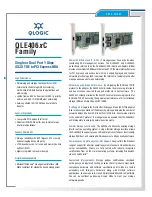
SyChip/Murata Confidential Page 28 of 31 SN2100 Datasheet Ver. 1.1
This device complies with Industry Canada license-exempt RSS standard(s). Operation is
subject to the following two conditions: (1) this device may not cause interference, and (2)
this device must accept any interference, including interference that may cause undesired
operation of the device.
Cet appareil est conforme avec Industrie Canada RSS standard exempts de licence (s).
Son utilisation est soumise à Les deux conditions suivantes: (1) cet appareil ne peut pas
provoquer d'interférences et (2) cet appareil doit accepter Toute interférence, y compris les
interférences qui peuvent causer un mauvais fonctionnement du dispositif.
This device complies with Health Canada’s Safety Code 6 / IC RSS-210. The installer of
this device should ensure that RF radiation is not emitted in excess of the Health Canada’s
requirement. Information can be obtained at:
http://www.hc-sc.gc.ca/ewh-
semt/pubs/radiation/radio_guide-lignes_direct-eng.php
Cet appareil est conforme avec Santé Canada Code de sécurité 6 / IC RSS-210. Le
programme d'installation de cet appareil doit s'assurer que les rayonnements RF n'est pas
émis au-delà de l'exigence de Santé Canada. Les informations peuvent être obtenues:
http://www.hc-sc.gc.ca/ewh-semt/pubs/radiation/radio_guide-lignes_direct-eng.php
13.5 IC Labeling Requirements
The host device should be properly labeled to identify the module within the host device.
The Industry Canada certification label of a module shall be clearly visible at all times when
installed in the host device, otherwise the host device must be labeled to display the
Industry Canada certification number of the module, preceded by the words “Contains
transmitter module”, or the word “Contains”, or similar wording expressing the same
meaning, as follows:
Contains transmitter module IC:4523A-SN2100,
where 4523A-SN2100 is the module’s certification number.
13.6 CE Notice (Europe)
This device has been tested and certified for use in the European Union.
If this device is used in a product, the OEM has responsibility to verify compliance of the
final product to the EU standards. A Declaration of Conformity must be issued and kept on
file as described in Annex II of the Radio and Telecommunications Terminal Equipment
Directive.
13.7 CE Labeling Requirements
The ‘CE’ mark must be placed on the OEM product per the labeling requirements of the
Directive. Given that the operating frequency band is not harmonized by a few European
countries, the restriction or alert sign must be placed alongside the ‘CE’ mark as shown
below. The restriction is that, if the radio is operated outdoors in the 2450-2483.5 MHz




































